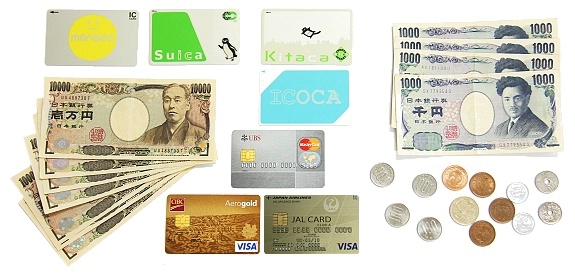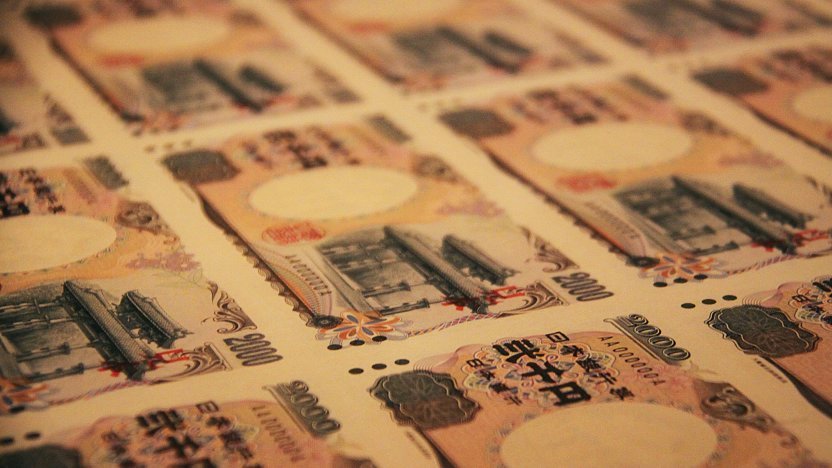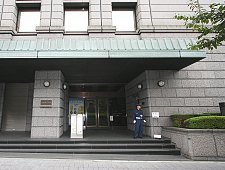Money

The Japanese currency is the yen (ē~, en). One yen corresponds to 100 sen; however, sen are not used in everyday life anymore, except in stock market prices. Bills come in 1,000 yen, 2,000 yen (very rare), 5,000 yen and 10,000 yen denominations. Coins come in 1 yen, 5 yen, 10 yen, 50 yen, 100 yen and 500 yen denominations. Foreign currencies are not accepted for payments in Japan, except perhaps at major international airports.
Payment methods in Japan
Japan has a reputation of being a cash-based society, but trends have been changing, and there has been a significant increase in the acceptance of other payment methods. Below are the modes of payment that you might use when visiting Japan:
- Cash
Cash is still a very popular payment method, especially for small amounts. Big bills are readily used and accepted in Japan; you are unlikely to be frowned upon for using a 10,000 yen bill to pay even for low-cost items, although smaller denominations are appreciated for payments made in taxis, smaller shops, temples and shrines. The likelihood that credit cards are accepted decreases in small cities and towns, and thus it is advisable to keep cash at hand when visiting rural areas.
Cash is often the only way to pay for small entrance fees at tourist sights, smaller restaurants and small shops. Many lockers also require coins. Most buses and trams accept payment by IC cards these days; if you pay by cash, note that bills above 1,000 yen may not be accepted and that drivers may not carry enough change. Vending machines typically accept 10, 50, 100 and 500 yen coins and 1,000 yen bills. Newer machines typically also accept 5,000 and 10,000 yen bills.
- Credit/debit cards
Credit and debit cards are now widely accepted, especially in big cities. Most hotels accept payment by credit cards, as do most department stores, mid to high end restaurants, outlet malls and large retail shops. In addition, many train stations, convenience stores, supermarkets, chain restaurants and boutiques also accept them.
- IC cards (more information)
IC cards, such as Suica and Icoca, are stored-value cards which can be recharged. Primarily a tool for convenient payment of train and bus fares, IC cards double as a means of payment at large numbers of shops and restaurants nationwide, most convenience stores, many chain restaurants, numerous vending machines and coin lockers.
- Other mobile payment options
The last few years have seen a big increase in other mobile payment options available besides the IC cards mentioned above. Most come in form of mobile phone apps that allow for payments at selected stores by tapping an NFC reader or scanning a QR code.
Among them are a large number of domestic services, such as Edy, Rakuten Pay and Paypay, which target residents of Japan and tend to be difficult or impossible to use by foreign tourists.
Apart from the domestic services, Alipay, WeChat Pay and Apple Pay are some of the services enjoying increasing acceptance; but note that at many stores Apple Pay will only work if you have an iphone 8 or later and a Suica card registered with it. Google Pay won't work on most phones sold outside of Japan because they don't support the global FeliCa standard needed for making payments at most stores.

How to get your yen
Cash is handy because it is accepted under virtually all situations, but credit cards can be a convenient alternative at appropriate locations. Theft and robberies are very rare in Japan, so with regards to keeping large amounts of cash with you, security is less of a concern than your propensity to lose money by accident. Here are ways to get your yen:
- Currency exchange
In Japan, currency exchange is usually handled by banks, post offices, some larger hotels and a handful of licensed money changers found especially at international airports.
Whether or not it is better to change for yen before coming into Japan depends on the currency that you hold. For example, the US dollar is a highly traded foreign currency in Japan, and partly for this reason you might get a favorable rate if you change US dollars into yen in Japan. On the other hand, in some Southeast Asian countries, the foreign exchange market is very competitive and money changers take a smaller cut, therefore it might be better to do the exchange there before coming into Japan.
- ATM withdrawal (more information)
A considerable number of ATMs in Japan do not accept cards that are issued outside of Japan. At those that do, exchange rates tend to be competitive, but service fees vary widely depending on the card. Inquire with your card issuer in advance. Note that many ATMs in Japan are out of service during the night, and some are unavailable on weekends.
Money-related tourist attractions
Below are a few money related sites in Japan that may be of interest to tourists:
Questions? Ask in our forum.



